Discover Thailand (16): The Thai culture
Before we discuss Thai culture, it is good to define the concept of culture. Culture refers to the entire society in which people live. This includes the way people think, feel and act, as well as the traditions, values, norms, symbols and rituals they share. Culture can also refer to specific aspects of society such as art, literature, music, religion, language, politics, economics, science, technology, and social organization. Another aspect of culture is the way people in a particular group or community live and their interactions with each other and with other groups or communities.
Thai culture is certainly special, it is a unique mixture of different influences, including those from the nearby countries of Laos, Cambodia and Malaysia. There are many specific customs and customs in Thai culture that vary by region and the social group in which people live.
Religion: Buddhism
An important part of Thai culture and very recognizable is Buddhism, the most dominant religion in the country. About 95% of the Thai population is Buddhist and Buddhism plays an important role in their daily life and culture. The temples, also called Wat, are important places of worship and meditation and the monks are respected members of society. There are also other religious groups in Thailand, including Islam, Christianity, and Hinduism. These groups coexist peacefully with each other and there is a high degree of religious tolerance in the country. In addition to temples, you will also encounter mosques, churches and other places of worship in Thailand. Thais are generally very tolerant of other faiths or religions.
Religion: Animism
Animism is an ancient form of religion that sees nature as animate and sentient. It is a belief that every living thing has a soul. This means that even things like trees, rivers and mountains have a soul according to the animist tradition. These souls are seen as guardian spirits who help to make life run in harmony. In Thailand, animism is still an important aspect and tradition both in the countryside and in the big cities. The ethnic minorities in the country, such as the Karen, the Hmong and the Moken, are also fervent supporters of animism, but also among Thai people from, for example, the Isaan, you see many followers and expressions of this belief. Animism in Thailand has also influenced the country's art and architecture. Many temples and sacred buildings are decorated with animal statues and other symbols associated with the guardian spirits. These symbols serve not only as a way of honoring the guardian spirits, but also as a way of reminding people that everything around us has a soul. The many spirit houses near homes and buildings is also an expression of this.
Language and dialect
In Thailand, there are many dialects spoken by Thais in different parts of the country. These dialects often depend on the region and can differ greatly from standard Thai, which is based on the language spoken in the central part of the country. Some of the main dialects spoken in Thailand are:
- Isaan: This dialect is spoken in the northeast of Thailand and is heavily influenced by the Laotian language. The Isan dialect is the most widely spoken in Thailand and is spoken by about a third of the population.
- Northern Thai: This dialect is spoken in northern Thailand and is heavily influenced by the Burmese-Yojana language.
- Southern Thai: This dialect is spoken in the south of Thailand and has strong Malay influences.
- Grab Tai: This dialect is spoken in eastern Thailand and has strong Cambodian influences.
While these dialects can vary greatly, most people in Thailand can also speak and understand Standard Thai, which helps with communication between people from different parts of the country.
Hierarchy and respect
Thailand is a highly hierarchical society, in which respect for the elderly, teachers, monks, authorities and the royal family plays an important role. In Thai culture, people are expected to show their respect by bowing their heads, folding their hands (Wai), addressing them by the title "khun", and behaving in a polite manner in front of them. This hierarchy is also present in the way Thais communicate with each other, especially in more formal settings such as at work or in education. For example, Thai people of lower social status will show respect to those of higher social status by addressing them as "khun" and communicating in a polite and respectful manner. In more informal settings, however, the hierarchy is often less obvious and people can communicate with each other in a more equal way.
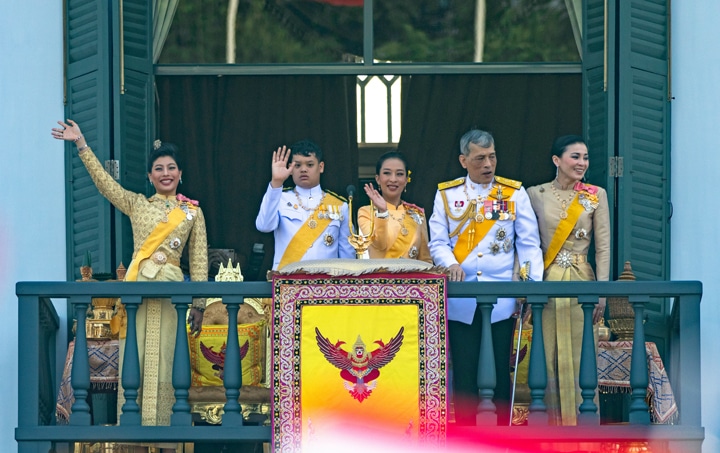
(Editorial Credit: SPhotograph/Shutterstock.com)
The Royal family
Thai culture is strongly influenced by the royal family. The King and Queen of Thailand are considered sacred figures and are treated with great respect. This is reflected, among other things, in the way Thais talk about the royal family – they always use formal titles and respectful terms when they speak of them. The royal family in Thailand is important to Thai people because it has a symbolic role in Thai culture and society. The King of Thailand is seen as an important national symbol and as a source of unity for the country. The royal family also has a long history and is deeply intertwined with Thai culture and traditions. In addition, the royal family also plays an important role in preserving Thai culture and promoting national pride. The royal family supports various cultural and historical projects and initiatives, and is involved in the preservation of important historical sites and monuments. Finally, the royal family also has a symbolic role in the political structure of Thailand. Although the king has no direct political power, he is seen as an arbitrator in times of political crisis and can influence political decision-making in the country.
Traditions and symbols
There are many important traditions, symbols and festivals in Thailand that are part of Thai culture and society. Here are some examples:
- Wai khru: This is a ceremony where students pay their respects to their teachers and the deceased ancestors of their family. During the ceremony, the students bow to their teachers and do traditional dances.
- Songkran: This is the Thai New Year, which is celebrated on April 13. During Songkran, water fights are held and people are sprinkled with water to bless them for the new year.
- Loy Krathong: This is a festival celebrated on the full moon of the twelfth month of the Thai calendar. During this festival, people make small boats out of leaves or bamboo, which they float in the water as a sign of respect to the river gods. Loy Krathong is also a time to ask forgiveness and pray for a good life.
- Wan Ok Phansa: This is the end of the Buddhist fasting period, which lasts three months. During Wan Ok Phansa, special ceremonies are held in temples and parties are organized to celebrate the end of the fasting period.
These are just a few examples of important traditions in Thailand. There are many others that depend on the region and the specific context in which they are celebrated. In addition, there are many important symbols in Thailand that are part of Thai culture and society. Here are some examples:
- The Garuda: The Garuda is a mythological creature depicted as a large bird with the body of a human being. It is the national symbol of Thailand and is often depicted on coins, stamps and other official documents.
- The Singha: The Singha is a mythological creature depicted as a lion with the body of a human. It is an important symbol of strength and protection and is often depicted on temples, amulets and other religious objects.
- The Buddha: The Buddha is an important symbol in Thai culture and is revered by most Thai people. There are many different representations of the Buddha, but all are meant to symbolize the enlightenment and understanding that the Buddha attained during his lifetime.
- The white elephant: The white elephant is considered a sacred animal in Thailand and is often associated with the Buddha and the king.
These are just a few examples of important symbols in Thailand.
Traditional music and dance
Music and dance is a well-known showcase for Thai culture and is deeply entwined with the country's traditions and customs. There are many different types of music and dance in Thailand, depending on the region and the specific cultural and historical context in which they are performed. One of the most famous forms of Thai music is the khon, a traditional form of opera performed with painted and embellished actors who tell stories through music, dance and pantomime. Usually based on stories from Indian epic poetry, the khon is often performed during important ceremonies and celebrations. Another well-known form of Thai music is the lam, a form of music and dance performed during the Loi Krathong holidays. The lam is performed by groups of dancers wearing traditional clothing and using instruments such as xylophones, drums and gongs. There are also many other forms of Thai music and dance, such as the mor lam, a type of folkloric music played in northeastern Thailand, and the likay, a form of popular theater music performed using song, dance, and drama .
One of the most famous forms of traditional Thai music is the khrueang sai, a form of music performed using instruments such as xylophones, drums, gongs and flutes. The khrueang sai is often performed during religious ceremonies and celebrations.
In Thailand, music and dance are not only important forms of entertainment, but they also play an important role in preserving Thai culture and promoting national pride.
Literature
Thai literature has a rich and diverse history stretching far back in history. One of the oldest forms of Thai literature is the Ramakien, an epic based on the Indian epic poetry of the Ramayana. The Ramakien is an important part of Thai culture and is still read and told today. Other forms of Thai literature popular in Thailand include the luk krung, modern novels written in Thai, and the luk thung, popular songs sung in Thai. Thai poetry is also an important part of Thai literature and can be found in a variety of forms, from classical poems written in Sanskrit to modern poems written in Thai.
An important development in modern Thai literature was the emergence of the luk krung, modern novels written in Thai. These novels cover a range of topics from love and romance to social and political issues. Some well-known Thai authors of luk krung are Kukrit Pramoj, Siburapha and Phra Peter Pannapadipo. Thai poetry has also played an important role in modern literature, particularly in the 1970s and 1980s when many young poets emerged and published their works in periodicals and literary magazines. Some well-known Thai poets from this period are Angkarn Kalayanapong, Kukrit Pramoj and Pisan Chamlong.
Finally, there are also many Thai stories, legends and myths that have been recorded over the centuries and are an important part of Thai literature. These stories are often told during parties.
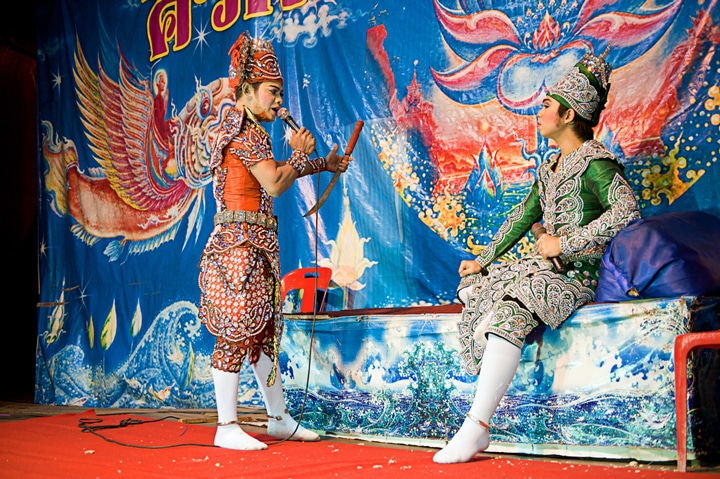
(Editorial Credit: Vudhikrai / Shutterstock.com)
Movies and soap operas
Movies are a well-known part of Thai culture and have a long history in the country. Thai films are known for their unique style and themes, and are regularly exported to other countries in Asia and beyond. One of the most popular genres of Thai films is the “luk thung” film, which combines music and drama and is often based on the life of the lower classes of Thailand. Other popular movie genres in Thailand are the “action” movie, the “horror” movie and the “romance” movie. Thai films are also known for their use of music, dance and spectacular visual effects. They are often filled with emotional and dramatic moments, and often have a message or lesson they want to convey to the audience.
In recent years there has also been an increasing popularity of Thai films being released internationally and reaching wider audiences. This has led to a growing interest in the Thai film industry and the unique aspects of Thai culture that are reflected in these films.
Soap operas on television are followed by many Thai people. Often referred to as “Lakorns,” these soap operas are often based on romantic stories and follow the lives of characters struggling with love, family issues, and other emotional challenges. Lakorns are often very popular in Thailand and are often broadcast on primetime TV. They are also frequently rebroadcast at other times of the day and can be viewed through streaming services as well.
Muay Thai
Muay Thai, also known as Thai boxing, is a martial art that is very popular in Thailand and around the world. The sport originated in Thailand and is based on ancient fighting techniques used by the country's armies. Legend has it that Muay Thai originated in the 16th century when a young prince named Naresuan the Great developed the sport's fighting techniques to defend against the Burmese. The prince was seen as a hero and his fighting techniques became known as Muay Thai. Over the centuries, Muay Thai has become an important sport in Thailand and has been integrated into Thai culture and traditions.
Muay Thai is performed by two fighters facing each other in a ring. The fighters may use punches, kicks and knees to fight their opponent. The sport is considered very intense and requires a high level of physical fitness and stamina. Muay Thai is not only popular as a sport, but is also widely practiced as a form of combat training and fitness. The sport is often practiced in special sports centers or gyms that specialize in Muay Thai. In Thailand, Muay Thai is not only an important sport, but also an important part of the culture. The sport is often performed during important celebrations and ceremonies and is seen as a way of displaying national pride. Muay Thai fighters are often seen as heroes and are revered and respected.
The art of massage
Thai massage, or rather its predecessor, is very old, it has been around for more than 2000 years. Today's Thai massage is popular worldwide for the myriad of health benefits it offers. Thai massage is based on the philosophy of Thai medicine, which states that the human body consists of energy pathways that connect the entire body. Thai massage is based on traditional medicine and yoga. The massage is performed by a masseur or masseuse, who uses his or her hands, elbows, knees and feet to massage the muscles and nerves and stretch your body. The massage is intended to reduce tension and possibly pain, with the ultimate aim of relaxing the body and mind.
Thai cuisine
Thai cuisine is appreciated by many people in the country and abroad for its unique flavors and aromas. Thai dishes are often spicy, sour, sweet and salty at the same time and use different herbs and spices to create these flavors. One of the main features of Thai cuisine is the use of fresh vegetables and herbs, such as basil, coriander, lime leaves and chillies, which are often picked straight from the garden or the market. Thai cuisine also uses an array of meats, fish and seafood, and meals are often based on rice or noodles.
Thailand is also known for the variety of street food and snacks that can be found all over the country. This includes popular dishes such as fried rice, grilled chicken, spring rolls, and noodle soup. Thai cuisine also plays an important role in Thai culture when it comes to social interactions and family gatherings. Sharing meals is an important aspect of the Thai lifestyle and meals are often cooked and eaten together.
Thai food also has e.gen solid international reputation and is popular in many countries around the world. This has led to a growing interest in Thai cuisine and the way it reflects Thai culture.
In short, the culture of Thailand is rich, versatile and interesting. It is a country where respect, friendliness and hospitality are of paramount importance, and where people of different religions and backgrounds live together peacefully.
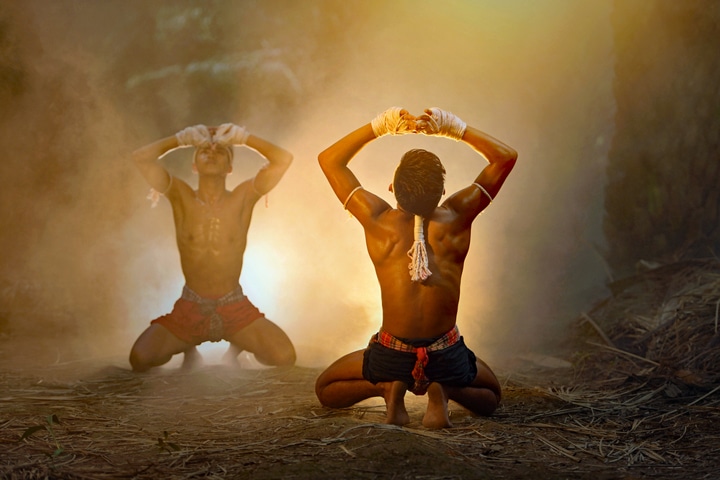
Muay Thai


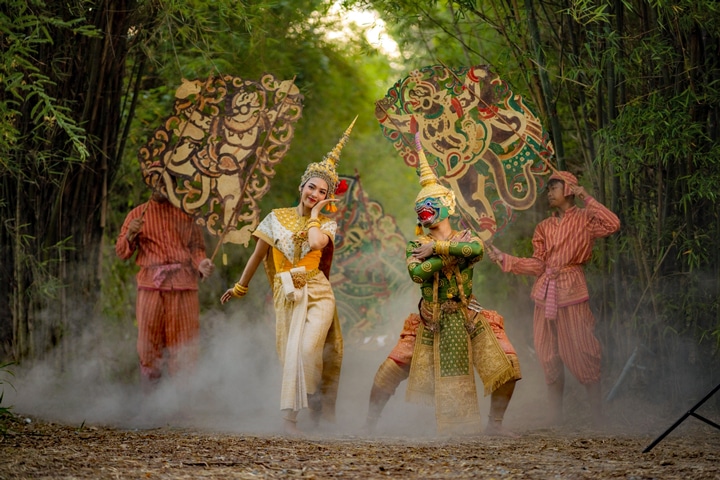
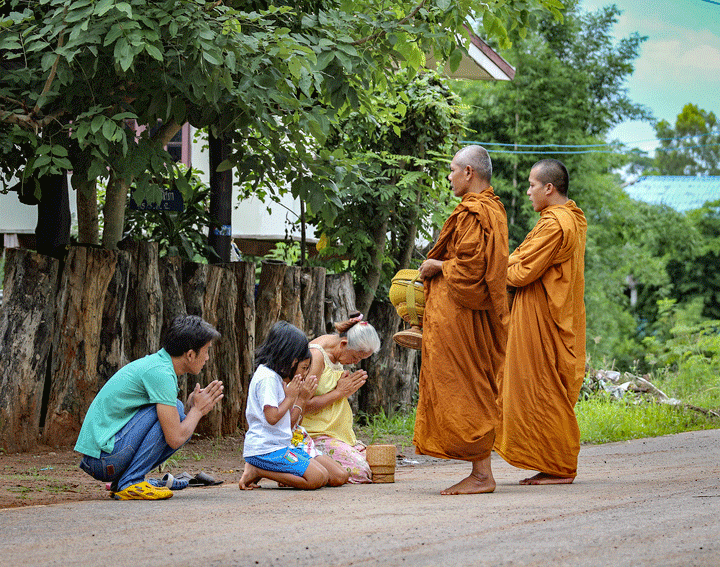
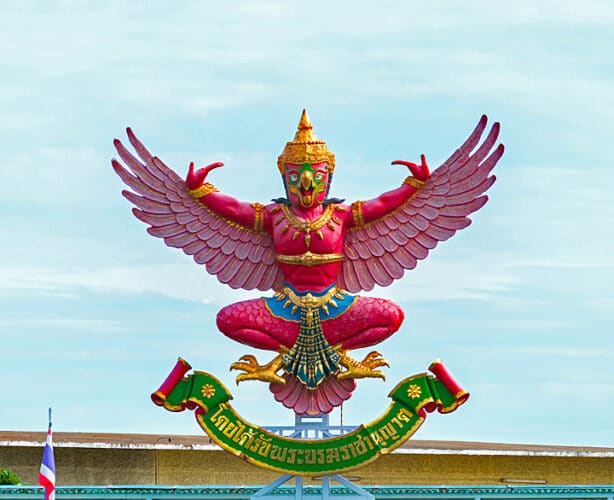
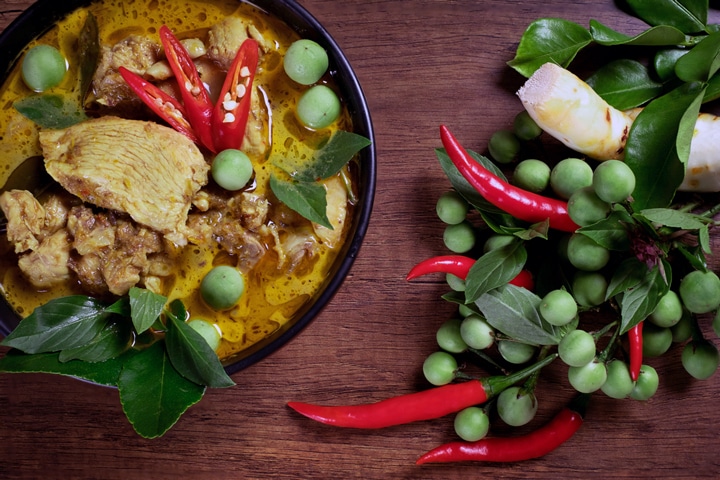
'Discover Thailand' and now especially part 16 'Thai culture' is a very good and extensive series. I enjoy it every time because it is not a boring summary but written honestly and vividly. Every time I come across new things for me. Yes, very educational. A compliment to the editors of Thailandblog!
Quite a good story. I prefer not to talk about 'Thai culture' but about the 'many different cultures in Thailand'.
Thailand indeed has many influences from abroad, now usually counted as a culture in Thailand. Does that also apply to McDonalds and KFC?
Eating at McDo or KFC in Thailand is trendy, especially among young people.
They sprinkle themselves with Western status by strolling around in those places.
Very sad. Relegated all that tasty and healthy Thai food to the (cultural culinary) wastebasket.
McDo still ok, due to the presence of two lettuce leaves, but KFC is sad.
'Fried' chicken, nice and fatty, usually without anything else, so definitely no veggies pulled to bits with a smile or great exquisite US cuisine.
It's chic.
Likewise with the music. US rappers from A, B, C grade to X, Y, Z level… They can sing along letter by letter.
Fortunately, there is a hard core of Isaan people who have not yet rejected the mor lam.
Well, after WW2 we also went to bubble gum and hamburger en masse….
Don't throw the first stone.